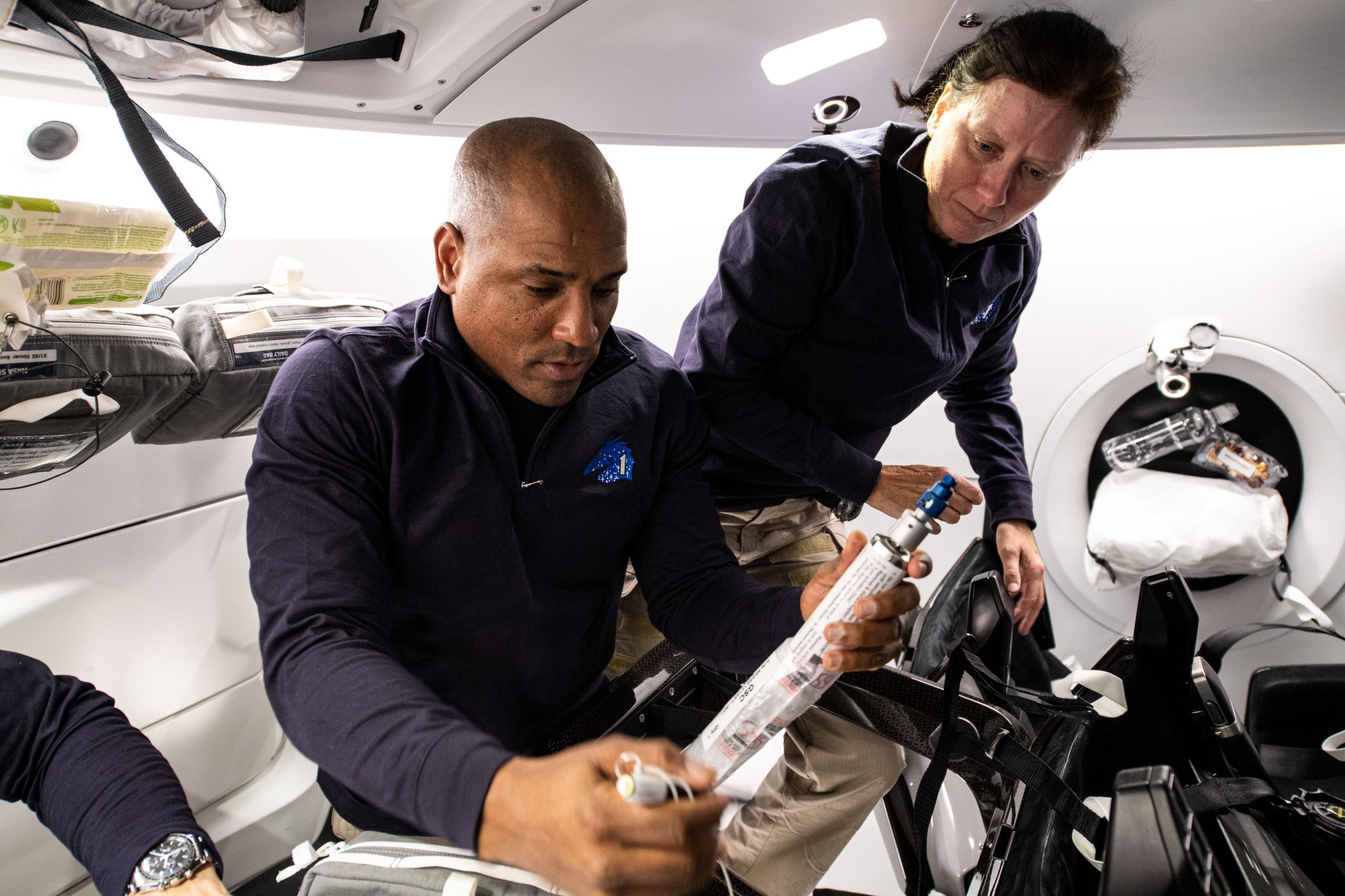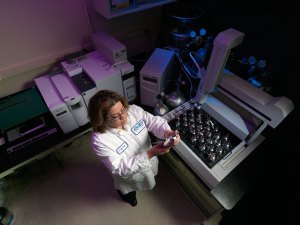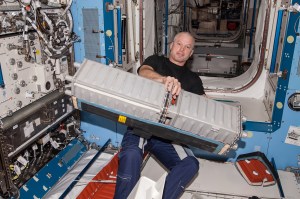Toxicology and Environmental Chemistry (TEC) monitors airborne contaminants in both spacecraft air and water. In-flight monitors are employed to provide real-time insight into the environmental conditions on ISS. Archival samples are collected and returned to Earth for full characterization of ISS air and water.
Real-time in-flight air analytical instruments include the Air Quality Monitors (AQM), carbon dioxide (CO2 monitors), and a compound specific analyzer for combustion products (CSA-CP). Real-time in-flight water monitoring capabilities include the colorimetric water quality monitoring kit (CWQMK) and the ISS total organic carbon analyzer (TOCA).
Post-flight analyses are performed on archival samples of spacecraft air and water obtained at specific times and locations during a mission. Air archival samples are collected using “grab sample containers” (GSC) and formaldehyde badges. The U.S. and Russian water recovery systems on the ISS process atmospheric moisture (U.S. and Russian systems) and urine distillate (U.S. system only) into clean, potable water for the crew to use. The Water Kit is utilized to collect archival samples of the potable water and are routinely returned to the ground to monitor the quality of the water produced by the systems. Samples of condensate and wastewater are also collected and returned to check for the presence of contaminants that could break through the water recovery systems.
Results of Post-Flight Analysis of In-Flight Air Samples (Most Recent First)
- Increment 69 Report Including Ax2 SpX28 NG19 Ingress (1MB)
- Increment 68 Report NG18 SpX26 SpX27 Ingress (845KB)
- Increment 65 Report with SpX22, MLM, NG16, SpX23 Ingresses (1.5MB)
- Increment 67 Report with OFT2 and SpX25 Ingress (962KB)
- Increment 66 Report SpX-24 NG-17 Ingress (835KB)
- Increment 64 including SpX-21 and NG-15 Ingress (897KB)
- Increment 63 Including HTV-9 and NG-14 Ingress (884KB)
- Increment 62-63 Benzene Anomaly Report (442KB)
- Increment 62 Including NG-13 and SpX-20 Ingress (747KB)
- Increment 61 including NG-12 and SpX-19 Egress (1.1MB)
- Increment 60 including SpX-18 and HTV8 Ingress (1.27MB)
- Increment 59 including NG-11 and SpX-17 Ingress (3.4MB)
- Increment 58 Report (2.78MB)
- Increment 57 including NG-10 and SpX-16 Ingress (2.71MB)
- SpaceX Demo-1 Ingress SM and DM1 Contingencies (792KB)
- Increment 56, HTV-7 and Node 1 Contingency Report (3.5MB)
- Increment 55 and SpX14 and OA9 Ingresses Report (1.9MB)
- Increment 54, including SpX-13 Ingress (877KB)
- Increment 53, including OA-8 Ingress and Node 1 Contingency Investigation (743KB)
- Increment 52 Report, including JEM odor contingency, SpX-11 and SpX-12 ingress, and WPA MF bed contingency samples
- Increment 51 and OA-7 Ingress Report (1.47MB)
- Increment 50 and HTV-6, SpX-10 Ingresses (2.72 MB)
- Increment 49 OA-5 Ingress and Oil Paint Odor Investigation Report (3.12MB)
- Increment 48, SpX-9 Ingress, and Oil Paint Odor Investigation Report (3.43MB)
- Increment 47, BEAM/OA-6/SpX-8 Ingresses, and Node 3 Siloxane Investigation Report (4.82MB)
- Increment 46 and Node 3 Contingency Report (4.4MB)
- Increment 45 and OA-4 Ingress (3MB)
- Increment 44 and HTV-5 Ingress Report (1.6MB)
- Increment 43, SpX-6 Ingress, Ethanol Investigation, and Node 1 Contingency Report (6.2MB)
- Increment 42 Report (4MB)
- Increment 41 Report (3.3MB)
- Space X-5 First Ingress Air Quality and Node 3 Contingency Report (2MB)
- SpaceX-4 First Ingress Air Quality Report (1.32MB)
- Increment 40, Orb-2/ATV-5 Ingresses, and SM Contingency (2.92 MB)
- Increment 39 and SpX-3 Ingress (5.75 MB)
- Increment 38 and Orb-1 Ingress (8.02 MB)
- Increment 37 and Orb-D1 Ingress (5.9 MB)
- Increment 36 and HTV-4 Ingress (7.22 MB)
- Increment 35 Report (4.04 MB)
- Increment 34 Report (5.64 MB)
- Feb. 2013 Contingency Sample Report (1.91 MB)
- Space X-2 First Entry Sample Analyses (1.56 MB)
- Soyuz 31S Return Samples (2.98 MB)
- Space X-1 First Entry Sample Analysis (39 KB)
- Revised Soyuz 30 Return Samples (7.46 MB)
- Space X-Demo First Entry Sample Analysis (767 KB)
- Soyuz 28 and Soyuz 29 Return Samples (1 MB)
- Soyuz 27 Return Samples (824 KB)
- STS-134, ULF7, 26S (2 MB)
- STS-133 / ISS-ULF5 (396 KB)
- Soyuz 25S Mission Report (286 KB)
- Soyuz 24S Return Samples of ISS Air (740 KB)
- Soyuz 23S Return Samples (593 KB)
- STS-132 / ISS-ULF4 (1.31 MB)
- STS-131 / ISS-19A (3.55 MB)
- STS-130 / ISS-20A (1.27 MB)
- STS-129 / ISS-ULF3 (1.4 MB)































